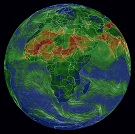Get a monitor and contributor to air quality data in your city.
| # | city | US AQI |
|---|---|---|
| 1 | Canberra | 52 |
(local time)
SEE WORLD AQI RANKINGAIR QUALITY DATA CONTRIBUTORS
Find out more about contributors and data sources| # | city | US AQI |
|---|---|---|
| 1 | Canberra | 52 |
(local time)
SEE WORLD AQI RANKING
19Contributors
Government Contributor
3 stations
Individual Contributor
1 station
17 Anonymous Contributors

17 stations
3 Data sources